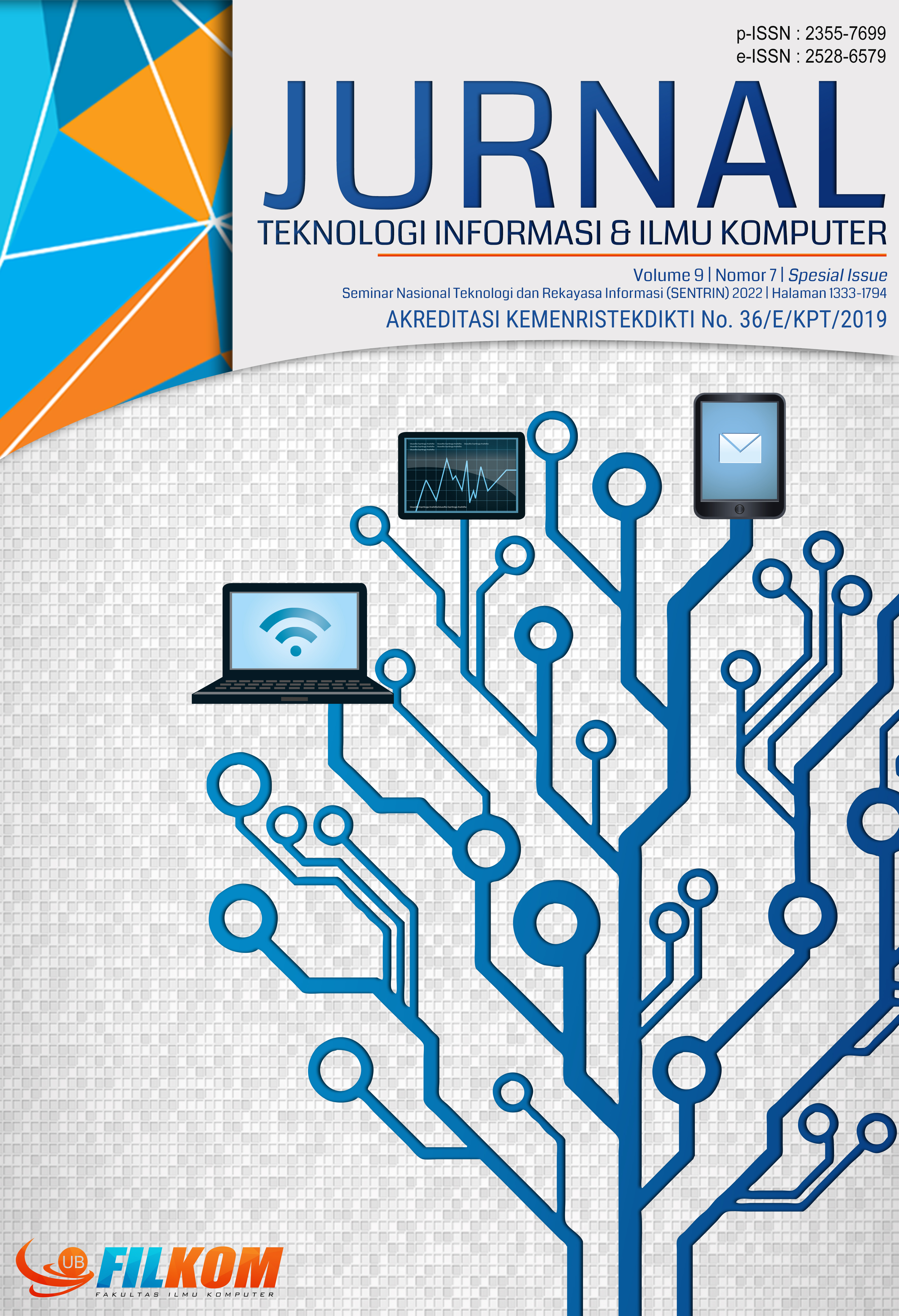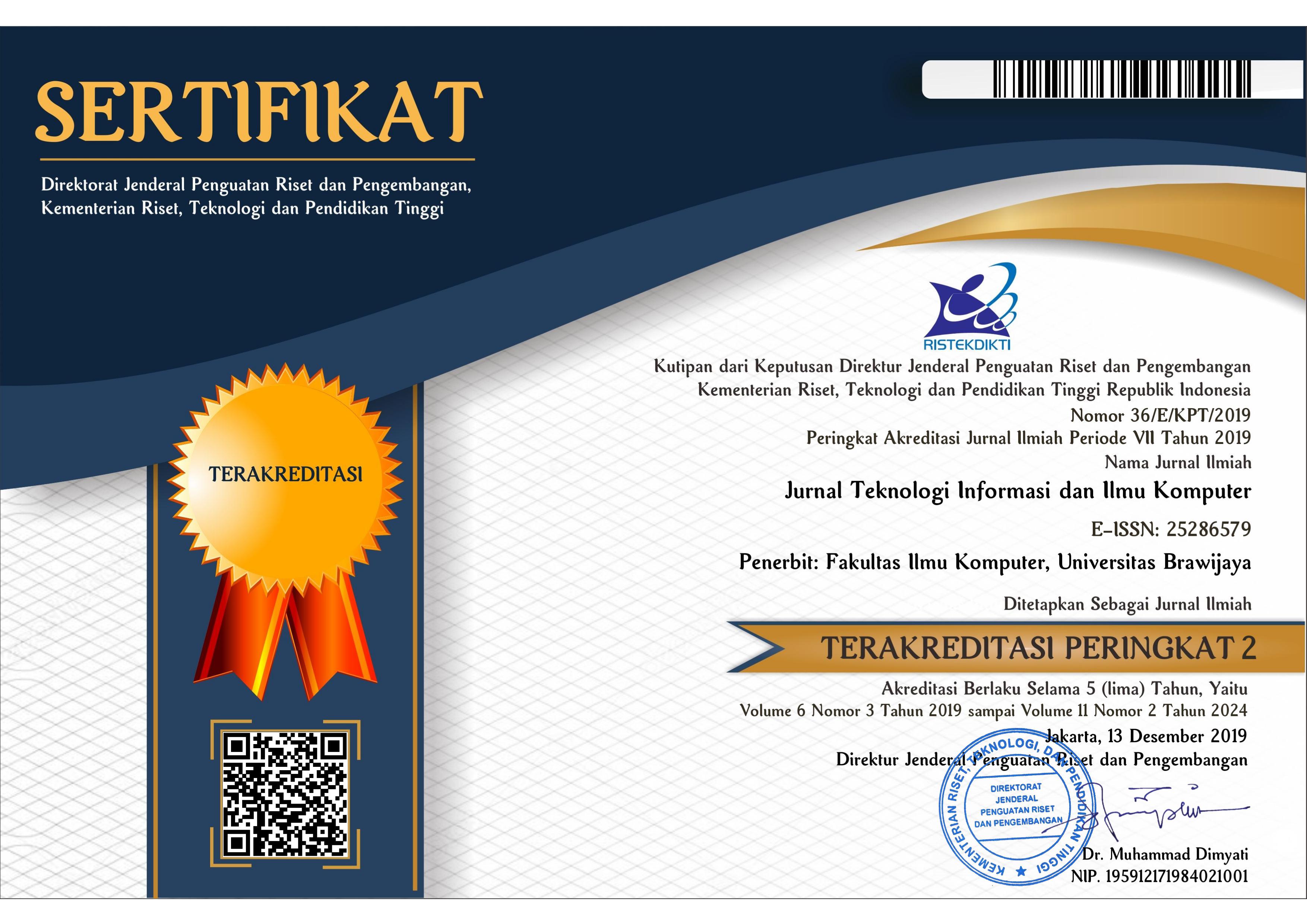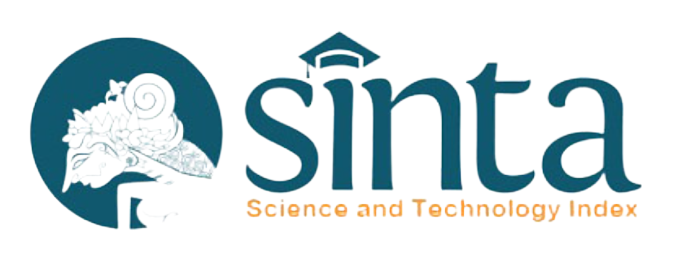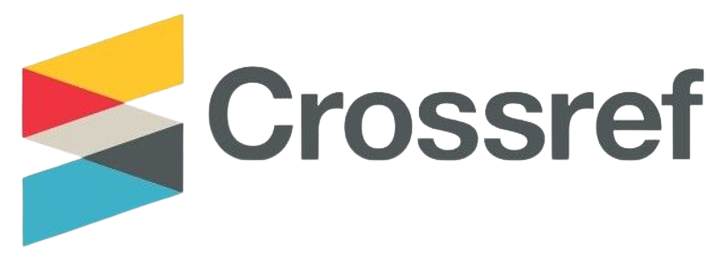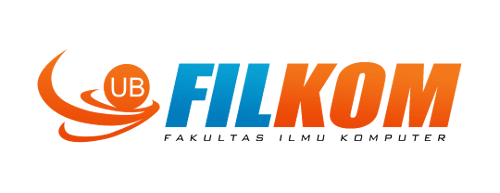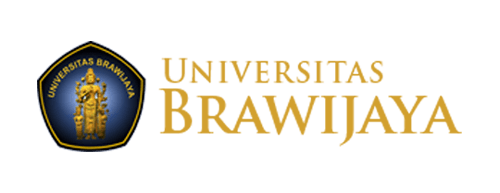Faktor Faktor Berpengaruh Kepada Kepuasan Mahasiswa Fakultas Ilmu Komputer Universitas Indonesia (Fasilkom UI) Terhadap Pembelajaran Jarak Jauh (PJJ) Melalui Student-Centered E-Learning Environment (SCELE)
DOI:
https://doi.org/10.25126/jtiik.2022976753Abstrak
Penelitian ini bertujuan untuk mengetahui faktor-faktor yang mempengaruhi kepuasan mahasiswa lintas jenjang dan lintas program studi pada Fakultas Ilmu Komputer Universitas Indonesia (Fasilkom UI) terhadap penggunaan Student Centered E-Learning Environment (SCELE), sistem manajemen pembelajaran berbasis Moodle milik Fasilkom UI selama masa pembelajaran jarak jauh. Dari hasil tinjauan literatur sistematis, dibangun sebuah model dari hasil pengumpulan faktor dan indikator potensial. Model tersebut kemudian diuji menggunakan metode kuantitatif, dan hasilnya dianalisa menggunakan Structural Equation Modelling. Dari hasil yang didapatkan, dilakukan wawancara untuk memahami dan menginterpretasikan hasil riset. Dari riset yang dilakukan, dapat disimpulkan bahwa faktor-faktor yang menunjang kepuasan mahasiswa Fasilkom terhadap penggunaan SCELE adalah faktor kualitas teknikal sistem, kualitas pelajar dan kualitas sistem pembelajaran/pendidikan.
Abstract
This study aims to determine factors that influence the satisfaction of Faculty of Computer Science Universitas Indonesia (Fasilkom UI) students towards the use of Fasilkom UI’s Moodle-based Student-Centered E-Learning Environment (SCELE) during mandatory distance learning. From the result of a systematic literature review, a model is built from by collecting and selecting potential factors and indicators. The model was then tested using a quantitative method, and the results were analyzed using Structural Equation Modeling. From the results obtained, interviews were conducted to understand and interpret the results of the research. From the research conducted, it can be concluded that the factors that support the satisfaction of Fasilkom UI students towards the usage of SCELE are the Technical System Quality, Learner Quality and the Educational System Quality.
Downloads
Referensi
AL-FRAIHAT, D., JOY, M., MASA’DEH, R., & SINCLAIR, J. 2020. Evaluating E-learning systems success: An empirical study. Computers in Human Behavior, 102, 67–86. https://doi.org/10.1016/j.chb.2019.08.004
AVISON, D. E., & FITZGERALD, G. 2006. Information Systems Development: Methodologies, Techniques and Tools. McGraw Hill.
CAMPBELL, L. 2004. What does the “e” stand for. Melbourne: Department of Science and Mathematics Education. The University of Melbourne.
CHO, G., HWANG, H., SARSTEDT, M., & RINGLE, C. M. 2020. Cutoff criteria for overall model fit indexes in generalized structured component analysis. Journal of Marketing Analytics, 8(4), 189–202. https://doi.org/10.1057/s41270-020-00089-1
DELONE, W. H., & MCLEAN, E. R. 2016. Information Systems Success Measurement. In Information Systems Success Measurement. Now Publishers Inc. https://doi.org/10.1561/9781680831436
DODUN, O., PANAITE, E., SEGHEDIN, N., NAGÎŢ, G., DUŞA, P., NEŞTIAN, G., & SLƏTINEANU, L. 2015. Analysis of an E-learning Platform use by Means of the Axiomatic Design. Procedia CIRP, 34, 244–249. https://doi.org/10.1016/j.procir.2015.07.059
EOM, S. B., & ASHILL, N. J. 2018. A System’s View of E-Learning Success Model. Decision Sciences Journal of Innovative Education, 16(1), 42–76. https://doi.org/10.1111/dsji.12144
GREGOR, S. 2002. A Theory of Theories in Information Systems. In S. Gregor & D. Hart (Eds.), Information Systems Foundations: Building the Theoretical Base (pp. 1–18). Australian National University.
HAIR, J. F., HULT, G. T. M., RINGLE, C. M., & SARSTEDT, M. 2013. A Primer on Partial Least Squares Structural Equation Modeling (PLS-SEM). Thousand Oaks. Sage, 165.
HAIR, J. F., HULT, G. T. M., RINGLE, C. M., & SARSTEDT, M. 2017. A Primer on Partial Least Squares Structural Equation Modeling (PLS-SEM) (2nd ed.). SAGE Publication, Inc.
HAIR, J. F., SARSTEDT, M., HOPKINS, L., & KUPPELWIESER, V. G. 2014. Partial least squares structural equation modeling (PLS-SEM): An emerging tool in business research. European Business Review, 26(2), 106–121. https://doi.org/10.1108/EBR-10-2013-0128
HASANI, L. M., & PURWANDARI, B. 2019. Model Intensi Pengajar dalam Mengadopsi Personalisasi Berdasarkan Gaya Belajar Berbantuan Sistem e-Learning di Perguruan Tinggi.
HASSANZADEH, A., KANAANI, F., & ELAHI, S. 2012. A model for measuring e-learning systems success in universities. Expert Systems with Applications, 39(12), 10959–10966. https://doi.org/10.1016/j.eswa.2012.03.028
HU, L., & BENTLER, P. M. 1999. Cutoff criteria for fit indexes in covariance structure analysis: Conventional criteria versus new alternatives. Structural Equation Modeling: A Multidisciplinary Journal, 6(1), 1–55. https://doi.org/10.1080/10705519909540118
JEYARAJ, A. 2020. DeLone & McLean models of information system success: Critical meta-review and research directions. International Journal of Information Management, 54, 102139.
https://doi.org/https://doi.org/10.1016/j.ijinfomgt.2020.102139
KERIMBAYEV, N., KULTAN, J., ABDYKARIMOVA, S., & AKRAMOVA, A. 2017. LMS Moodle: Distance international education in cooperation of higher education institutions of different countries. Education and Information Technologies, 22(5), 2125–2139. https://doi.org/10.1007/s10639-016-9534-5
NASH, S. S. 2018. Moodle Course Design Best Practices: Design and Develop Outstanding Moodle Learning Experiences, 2nd Edition. Packt Publishing.
NICHOLSON, P. 2007. A History of E-Learning. In B. Fernández-Manjón, J. M. Sánchez-Pérez, J. A. Gómez-Pulido, M. A. Vega-Rodríguez, & J. Bravo-Rodríguez (Eds.), Computers and Education: E-Learning, From Theory to Practice (pp. 1–11). Springer Netherlands. https://doi.org/10.1007/978-1-4020-4914-9_1
OECD. 2020. Education and Covid-19: Focusing on the Long-Term Impact of School Closures. In OECD Policy Responses to Coronavirus (COVID-19) (Issue June).
OZKAN, S., & KOSELER, R. 2009. Multi-dimensional students’ evaluation of e-learning systems in the higher education context: An empirical investigation. Computers and Education, 53(4), 1285–1296. https://doi.org/10.1016/j.compedu.2009.06.011
SCHLEICHER, A. 2020. The impact of COVID-19 on education: Insights from education at a glance 2020. In OECD Journal: Economic Studies. https://www.oecd.org/education/the-impact-of-covid-19-on-education-insights-education-at-a-glance-2020.pdf
TOMSIC, P., DEMSAR, I., & FINKST, T. 2020. Using moodle e-learning platform in mechanical engineering lectures. 2020 43rd International Convention on Information, Communication and Electronic Technology, MIPRO 2020 - Proceedings, 1585–1590.
https://doi.org/10.23919/MIPRO48935.2020.9245423
TURBAN, E., OUTLAND, J., KING, D., LEE, J. K., LIANG, T.-P., & TURBAN, D. C. 2018. Electronic Commerce 2018. Springer International Publishing. https://doi.org/10.1007/978-3-319-58715-8
YAN, L., YANG, J., & WANG, W. 2008. Using Web 2.0 for Knowledge Management in Higher Education. 2008 International Symposium on Knowledge Acquisition and Modeling, 419–423. https://doi.org/10.1109/KAM.2008.24
Unduhan
Diterbitkan
Terbitan
Bagian
Lisensi

Artikel ini berlisensi Creative Common Attribution-ShareAlike 4.0 International (CC BY-SA 4.0)
Penulis yang menerbitkan di jurnal ini menyetujui ketentuan berikut:
- Penulis menyimpan hak cipta dan memberikan jurnal hak penerbitan pertama naskah secara simultan dengan lisensi di bawah Creative Common Attribution-ShareAlike 4.0 International (CC BY-SA 4.0) yang mengizinkan orang lain untuk berbagi pekerjaan dengan sebuah pernyataan kepenulisan pekerjaan dan penerbitan awal di jurnal ini.
- Penulis bisa memasukkan ke dalam penyusunan kontraktual tambahan terpisah untuk distribusi non ekslusif versi kaya terbitan jurnal (contoh: mempostingnya ke repositori institusional atau menerbitkannya dalam sebuah buku), dengan pengakuan penerbitan awalnya di jurnal ini.
- Penulis diizinkan dan didorong untuk mem-posting karya mereka online (contoh: di repositori institusional atau di website mereka) sebelum dan selama proses penyerahan, karena dapat mengarahkan ke pertukaran produktif, seperti halnya sitiran yang lebih awal dan lebih hebat dari karya yang diterbitkan. (Lihat Efek Akses Terbuka).

